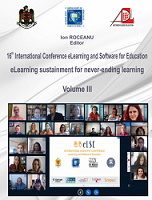E-LEARNING ABOUT QUALITY CONTROL IN THE TEXTILE INDUSTRY. CASE STUDY
E-LEARNING ABOUT QUALITY CONTROL IN THE TEXTILE INDUSTRY. CASE STUDY
Author(s): Adina Bucevschi, Monica Pustianu, Ionel Barbu, Magda Fogorasi, Erzsebet AirineiSubject(s): Higher Education , ICT Information and Communications Technologies, Distance learning / e-learning
Published by: Carol I National Defence University Publishing House
Keywords: e-learning; Martindale; pilling; abrasion;
Summary/Abstract: The paper presents a way of teaching and learning of laboratory works in the course "Quality Control in the Textile Industry". The course "Quality Control in the Textile Industry" is addressed to students in the second year, the first semester. As case study, “Determination of the pilling and abrasion resistance proprieties, using the “Martindale apparatus” was chosen. The Martindale method, also known as the Martindale rub test, simulates natural wear of a fabric, in which the textile sample is rubbed against a standard abrasive surface with a specified force. The resistance of textile materials to abrasion as measured on a testing machine in the laboratory is generally only one of several factors contributing to wear performance or durability as experienced in the actual use of the material. Classical teaching methods are being gradually replaced by modern methods, using PC. Almost all our laboratory works are loaded on a platform that can be accessed by each student, no matter where they are. The students can access the paper on the site of our University, www.uav.ro. To enhance students' motivation and capture their attention, a PowerPoint presentation has been used that includes slides with different parts of lab work, external links, and video documents. To evaluate the resistance to pilling and abrasion of the fabrics, subjective and objective assessment methods were used. The data obtained were statistically processed and graphically represented using Excel, followed by the interpretation of the results. Based on this information, a hierarchy of materials according to their tendency to form the pilling and the abrasion resistance can be accomplished.
Journal: Conference proceedings of »eLearning and Software for Education« (eLSE)
- Issue Year: 16/2020
- Issue No: 03
- Page Range: 301-308
- Page Count: 8
- Language: English

